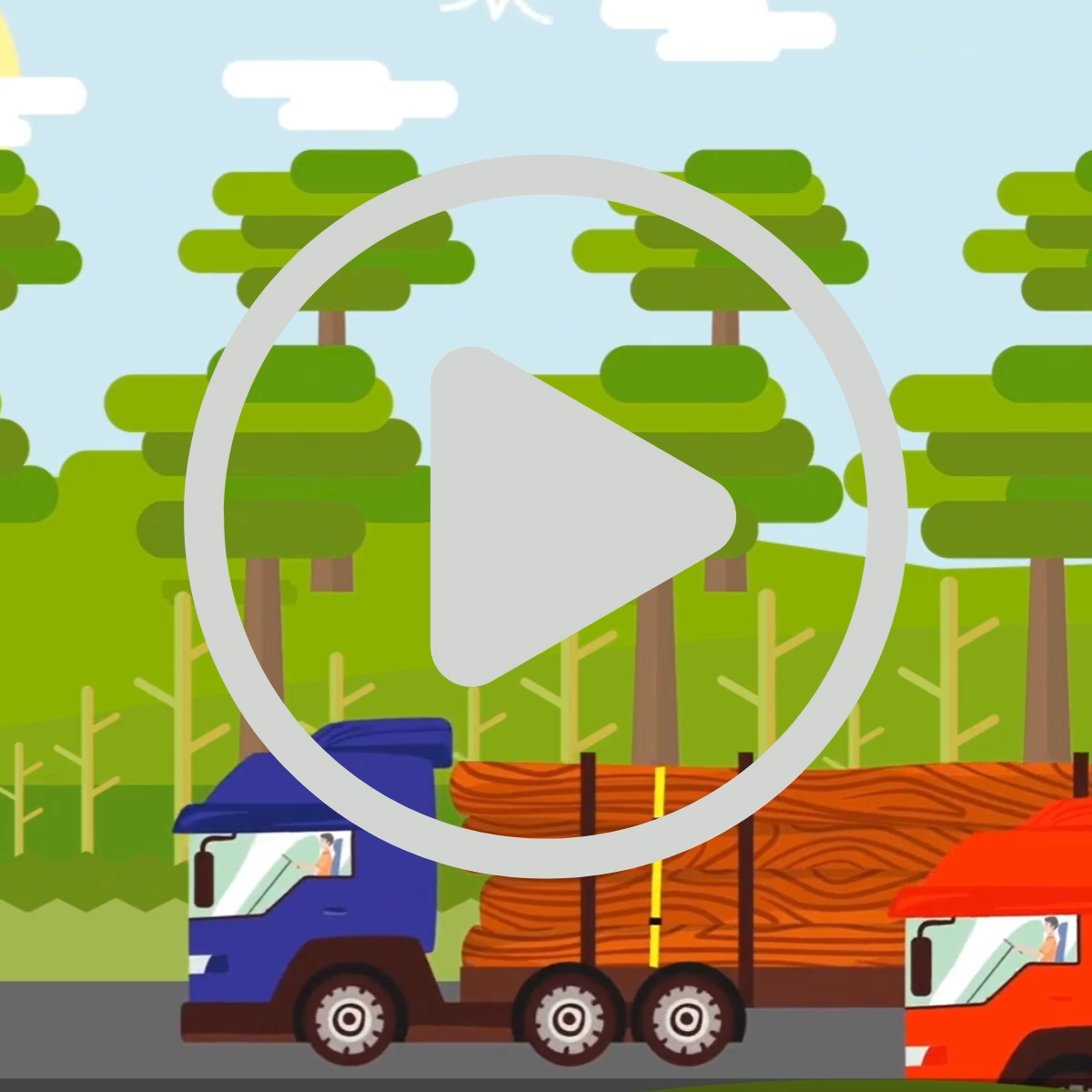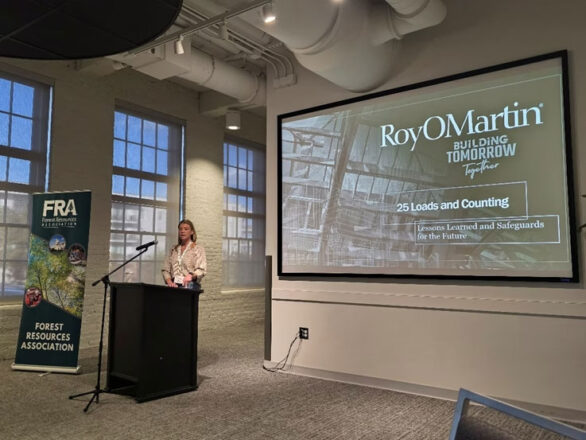Keeping the Wood Supply Chain Moving: Why the Safe Routes Act is Essential for Forestry Transportation

Transporting raw forest products (logs, pulpwood, wood chips, and biomass) from the harvest site to consuming mills is a vital component of the wood supply chain. In the US, the federal government has regulatory oversight for establishing weight limits on the interstate highway system, while state or local governments have the authority to set weight limits on other roadways. State gross vehicle weight (GVW) limits exceed the federal weight limit (80,000 pounds) in all major timber-producing states, with many states having specific exemptions for forestry and agriculture. As a result, log trucks transporting raw forest products avoid interstate highways and are forced to use secondary roads to haul wood fiber to consuming mills or other concentration points. This is problematic since secondary roads routinely involve two-way traffic, busy intersections, school zones, and driveways – conditions that elevate the risk of accidents. Allowing trucks access to the interstate system at state-approved GVW is a safer and more efficient approach to transport raw forest products (logs, pulpwood, chips, biomass) to end markets. This policy adjustment would better align transportation infrastructure with the operational realities of the forest sector.
The Safe Routes Act (S.1063, H.R.2166) aligns interstate weight limits with state-approved vehicle weight limits. A more direct transportation route for trucks is a safer option, as it allows drivers to avoid school zones, intersections, and small towns where the accident risk is significantly higher and encounters with pedestrians and other vehicles are more frequent. Secondary roads are generally inferior to major highways in terms of durability. Utilizing higher-quality road networks for transport would minimize routine roadway deterioration or damage if loaded log trucks were permitted legal access to the interstate system at state-approved GVW limits. Increased efficiency is also a key component of the Safe Routes Act. Interstates are often a more direct route to consuming mills. This means quicker transportation and turnaround times, less fuel consumption, and lower carbon emissions. Reducing transportation costs and improving economies of scale are attractive options for most wood supply chain stakeholders.
Peer-reviewed and published research supports our position that the federal interstate system is a safer and more efficient means of transporting forest products. Conrad (2020) and Blinn (2023) reported that access to an interstate route for short-haul distances avoids small-town road hazards, lowers overall accident rates, reduces CO2 emissions, minimizes damage to rural roads, and reduces transportation costs. Specifically, on a per-load basis, log trucks have a lower fatality rate than other heavy trucks in 83% of the lower 48 states (Blinn, 2023). According to Conrad (2018), 50% of log truck accidents in Georgia occurred in urban areas, with 41% of these accidents taking place within five miles of an interstate. Furthermore, findings from a nationwide study of fatal log truck crashes in the US stated that the most common pre-crash event occurred when a vehicle traveling in the opposite direction crossed the center lane and directly into the path of an oncoming log truck (Cole, 2019).
Additional support beyond the academic community for reducing heavy truck traffic on rural roadways is also well-documented. Congressman David Rouzer (R-NC-07) stated the following at a February 12 (2025) hearing of the House Transportation and Infrastructure Highways and Transit Subcommittee: “[vehicle] Fatality rates remain one and a half times higher in rural areas than in urban areas, our rural roads often have narrower lanes, limited shoulders, exposed hazards, and limited clear zones.” A pilot project in Maine (2010) provided further evidence that interstate routes are a safer option for heavy truck traffic. Maine Department of Transportation statistics indicated that truck accidents decreased 25%, fatalities decreased by 37%, and property damage was reduced by 11% after the pilot project went into effect.
Transportation will be a key topic at FRA’s Legislative Fly-In again this Fall (October 7th–9th), with the Safe Routes Act serving as the foundation for policy discussions. FRA and our allies have made significant progress on building a strong coalition on Capitol Hill to support the Safe Routes Act; however, more bipartisan co-sponsors are needed to support the efforts of sponsors Senator Ron Johnson (R-WI) and Representative Tony Wied (R-WI-08). The inability to recruit and retain truck drivers is also a major concern for our industry and a key factor driving FRA’s commitment to workforce development initiatives. A key piece of legislation that also has FRA support is the License Act of 2025 (S. 191, H.R. 623), which aims to enhance the efficiency of obtaining a commercial driver’s license (CDL). Streamlining the CDL process is a great way to address the workforce capacity issue confronting the transportation sector nationwide.
Improving transportation safety and efficiency is critical for forest products industry stakeholders and the resiliency of the associated wood supply value chain. FRA encourages our members to reiterate the importance of the Safe Routes Act during your Fly-In meetings on Capitol Hill and/or through direct targeted outreach to your congressional delegation. We are gaining momentum in making a difference, but we need your continued support to drive the much-needed transportation sector reform. For more information on why this topic is critical for the wood supply value chain, please explore
FRA’s resources:
Safe Routes Act Issue Brief
Safe Routes Video
Southeast Region Research
Lake States Region Research

